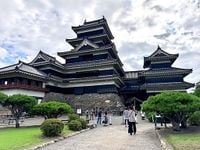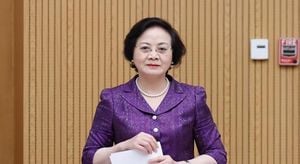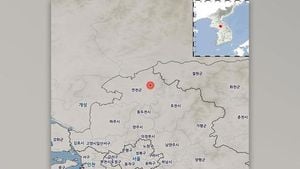During the extended Golden Week holiday in 2025, which lasted up to 11 days, Nagasaki Prefecture saw a significant surge in tourist numbers, as revealed in a report released on May 9. The prefecture welcomed approximately 448,700 visitors, marking an increase of 55,000 compared to the previous year. This uptick can be attributed to several factors, including favorable weather conditions and an additional holiday that provided more time for travel.
The most popular tourist destination in Nagasaki was the 'Michi-no-Eki Hotaru' in Higashisonogi Town, which attracted around 51,600 visitors. This figure represents an impressive increase of 5,000 from 2024, making it the leading spot for the second consecutive year. Located conveniently along the road to Huis Ten Bosch and the Hasami Pottery Festival, the site serves as a crucial stop for travelers.
Following closely was the Nagasaki Prefectural Art Museum, which saw an impressive 48,600 visitors—approximately 2.5 times more than in the previous year. The surge in attendance at these attractions underscores the growing popularity of Nagasaki as a travel destination.
The Nagasaki Prefectural Tourism Promotion Division noted that the extended holiday period, which included four weekdays between holidays, was a significant contributing factor to the increase in visitors. "This year, the holiday span was longer by one day compared to last year, and we were fortunate to have generally favorable weather," a spokesperson from the division explained.
In contrast, Matsumoto City reported a decline in visitors to its national treasure, Matsumoto Castle, during the same Golden Week period. On May 8, officials announced that the castle had welcomed 41,896 visitors from April 26 to May 6, 2025. This figure is nearly 3,000 fewer than the previous year, attributed to the 'flying stone' effect—where weekdays interrupt holiday periods—and adverse weather conditions.
The Matsumoto Castle Management Division noted that the number of visitors was further impacted by having one less holiday day compared to the previous year. Despite the decline, the castle remains a significant cultural attraction, drawing visitors from across the nation.
As travel trends continue to evolve, the contrasting experiences of Nagasaki and Matsumoto highlight the varying impacts of holiday scheduling and weather on tourism. While Nagasaki enjoyed a booming season, Matsumoto faced challenges, illustrating the unpredictable nature of the tourism industry. The data from both regions will likely inform future strategies for attracting visitors and enhancing their experiences.
Looking ahead, local authorities in both prefectures are expected to analyze these trends closely. The success of Nagasaki's tourist influx could serve as a model for Matsumoto and other regions aiming to boost their tourism numbers. As they prepare for future holidays and events, the focus will be on creating appealing offerings that can withstand the variable factors that influence travel.




